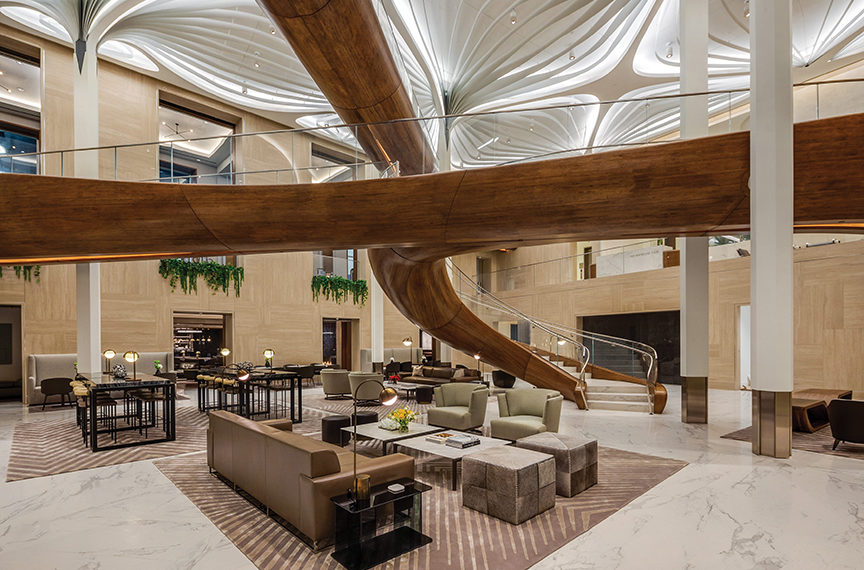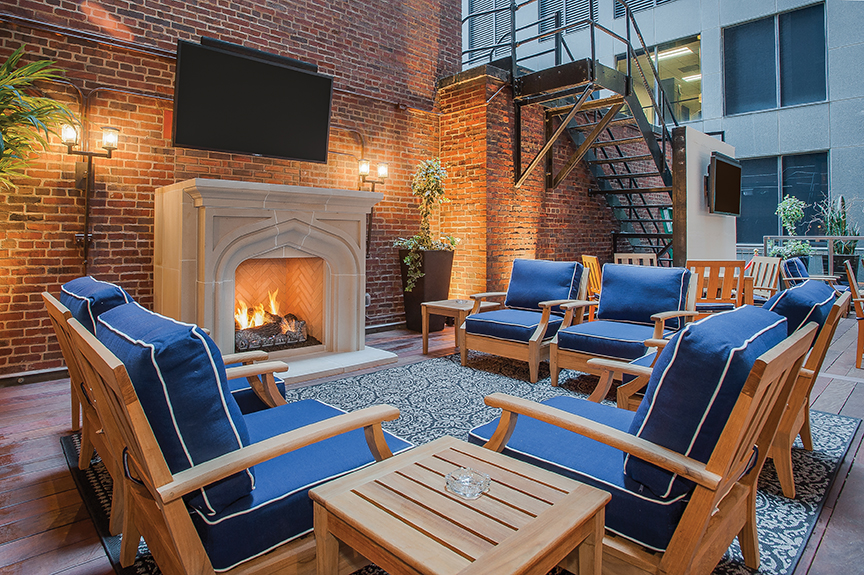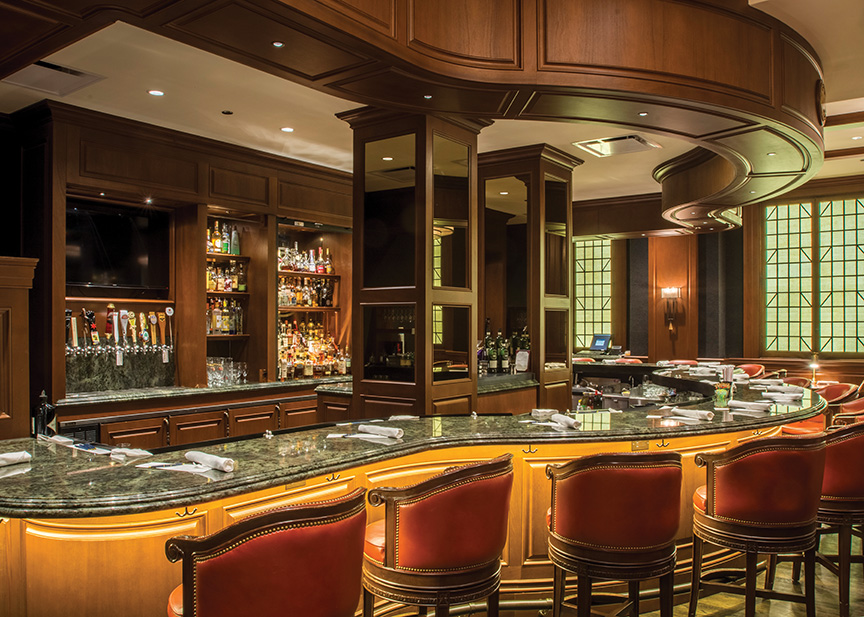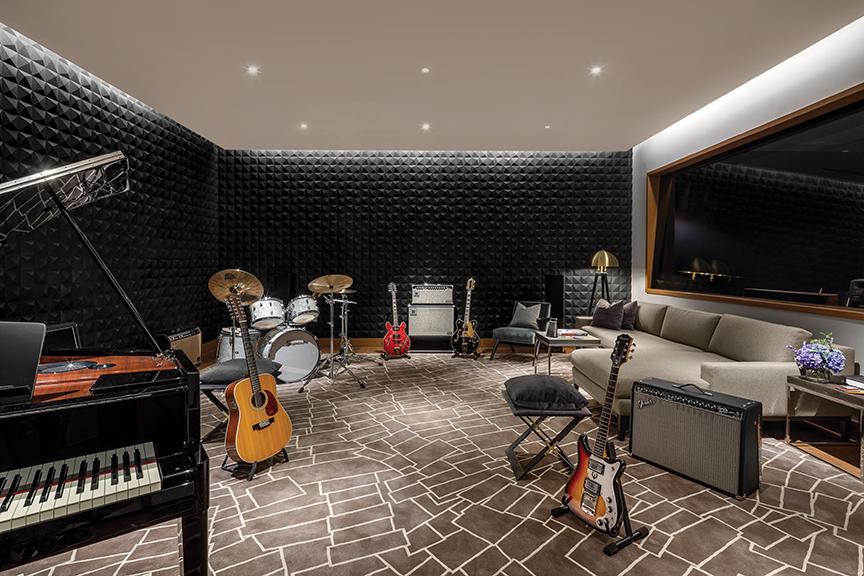By Roger Grody
Mahogany-clad private city clubs, the quintessential domain of lions of industry a century ago, gradually fell out of favor among contemporary business leaders, but sleek new aesthetics and more relevant amenities are contributing to renewed interest. Reimagined city clubs are resonating with a new generation of entrepreneurs and civic leaders discovering the enduring appeal of exclusivity.
Reforming dress codes — making them more consistent with how members dress for the office and dining out —is a simple measure that can ensure these venerable institutions are not viewed as obsolete. Relaxing strict prohibitions on cell phones is another nod to a contemporary lifestyle, and interior design is being reevaluated. Successful city clubs are introducing fresh, modern aesthetics while still honoring the traditional architecture typical of well-established clubs.
Founded in 1895 as a modest social organization, the Jonathan Club in downtown Los Angeles evolved into a prestigious institution attracting prominent business leaders and politicians. Thanks to its willingness to reinvent itself, including elevating the cuisine and emphasizing its beach facility, the Jonathan Club has not only avoided the perception of obsolescence, but has flourished. With several Soho House locations and trendy venues such as The Britely and Gwyneth Patlrow’s soon-to-open Arts Club, L.A. has a vibrant members-only scene. Nonetheless, the Jonathan Club has endured in a city with a famously short attention span.
The Union League Club of Chicago was founded in 1862 as an organization supporting the policies of President Abraham Lincoln and evolved into a prominent business and civic club. Its members were instrumental in bringing the 1893 Columbian Exposition world’s fair to Chicago and founding some of the city’s major cultural institutions. General manager Mark Tunney explains members appreciate the club’s ongoing commitment to philanthropy and that for many of them, it provides the sense of community they long for.
Tunney, who notes the downtown Loop location of the Union League Club of Chicago makes it convenient for bankers, attorneys and judges, has increased the curb appeal of the institution’s Beaux-Arts building. “We used to have just a plaque identifying the location of the club, but a few years ago we created a street level café visible from the street,” says the general manager. “Now people walk by and wonder what’s going on in there,” he explains.
While plenty of mahogany, leather and marble remains, Tunney reports that many spaces have been refreshed with contemporary aesthetics that appeal to younger members. “Nobody wants to walk into a place that
looks or feels stodgy,” says Tunney, who notes the Union League Club of Chicago’s board is approximately 50 percent women and that younger members are active in committees.
“We don’t have a stuffy dress code,” assures Tunney, who recounts, “Members were telling us their banks and corporate offices were allowing jeans, so we adopted a ‘smart casual’ dress code.” While the club’s dining, overnight accommodations and athletic facilities are enticing, Tunney insists new members are most attracted by the opportunity to become part of a community.
In New York, private city clubs continue to thrive, including the storied Knickerbocker Club, still a gentlemen’s only retreat whose membership has included Paul Mellon, J.P. Morgan and FDR. The Union Club has been hosting the Big Apple’s movers and shakers since 1836 and still imposes a strict dress code and prohibition on cell phones.
Occupying a stately Romanesque structure, the Duquesne Club is Pittsburgh’s most prestigious social club. However, modernized interiors and relaxed dress codes draw younger professionals in a city now more dependent on technology than steel.
The Fitler Club in Philadelphia, founded in 2019, promotes itself as a new interpretation of the private city club, employing the slogan “Tradition Rewritten.” Founder David Gutstadt states, “This is a next-level club that reflects a new generation of urban sophisticates,” characterizing his members as leaders, innovators, influencers, and changemakers.
“They want to spend time with a like-minded community of other fearlessly creative people,” maintains Gutstadt. From interiors to cuisine, even the artwork displayed, the venue conveys a sense of modernity that resonates with a trend-conscious membership.
John Fornaro, CEO of Distinguished Clubs and CEO/publisher of The BoardRoom magazine, insists that city clubs are well suited to a younger demographic in spite of outdated images of cigar-smoking fat cats. “Young people already belong to more ‘clubs’ than we ever did,” suggests Fornaro, citing Facebook groups as self-selected memberships akin to private clubs. “Where do young professionals gather and meet people with similar interests, especially when they’re not working in a traditional office setting?” queries Fornaro.
Elaborate clubs in luxury residential buildings represent an emerging alternative to old school city clubs, and New York’s 100,000-square-foot Waterline Club is a prime example. Integrated into Waterline Square, a complex of high-rises from acclaimed architects, the venue combines elements of a traditional city club with those of a top-
drawer athletic club. The diverse spaces are tied together by compelling design from Rockwell Group, hospitality industry masters whose portfolio includes Nobu Hotels and The Cosmopolitan in Las Vegas.
Swimming, tennis and squash — even a climbing wall and half-pipe park for skateboarders — are offered at the Waterline Club, as well as premium spa facilities, bowling alley, well-equipped business center, and extensive resources for children and pets. Enhancing social functions are Waterline Square’s various dining opportunities, including an upcoming venue from the famed Cipriani family of Venice.
James Linsley, president of GID Development Group, the developer of Waterline Square, reports, “Luxury buyers and renters today are demanding personalized services for a well-rounded, hassle-free lifestyle where everything is available at their fingertips.” He suggests that residents’ desire to connect socially with neighbors echoes the role of more traditional clubs.
“Striking, thoughtful design was just as important to us as selecting which amenities would be included,” states Linsley of architecture that is welcoming to all ages. “The moment you step inside the Waterline Club and see the soaring ceilings and stunning pedestrian bridges, you immediately know this is unlike anything you’ve ever experienced in New York.”






Leave a Reply